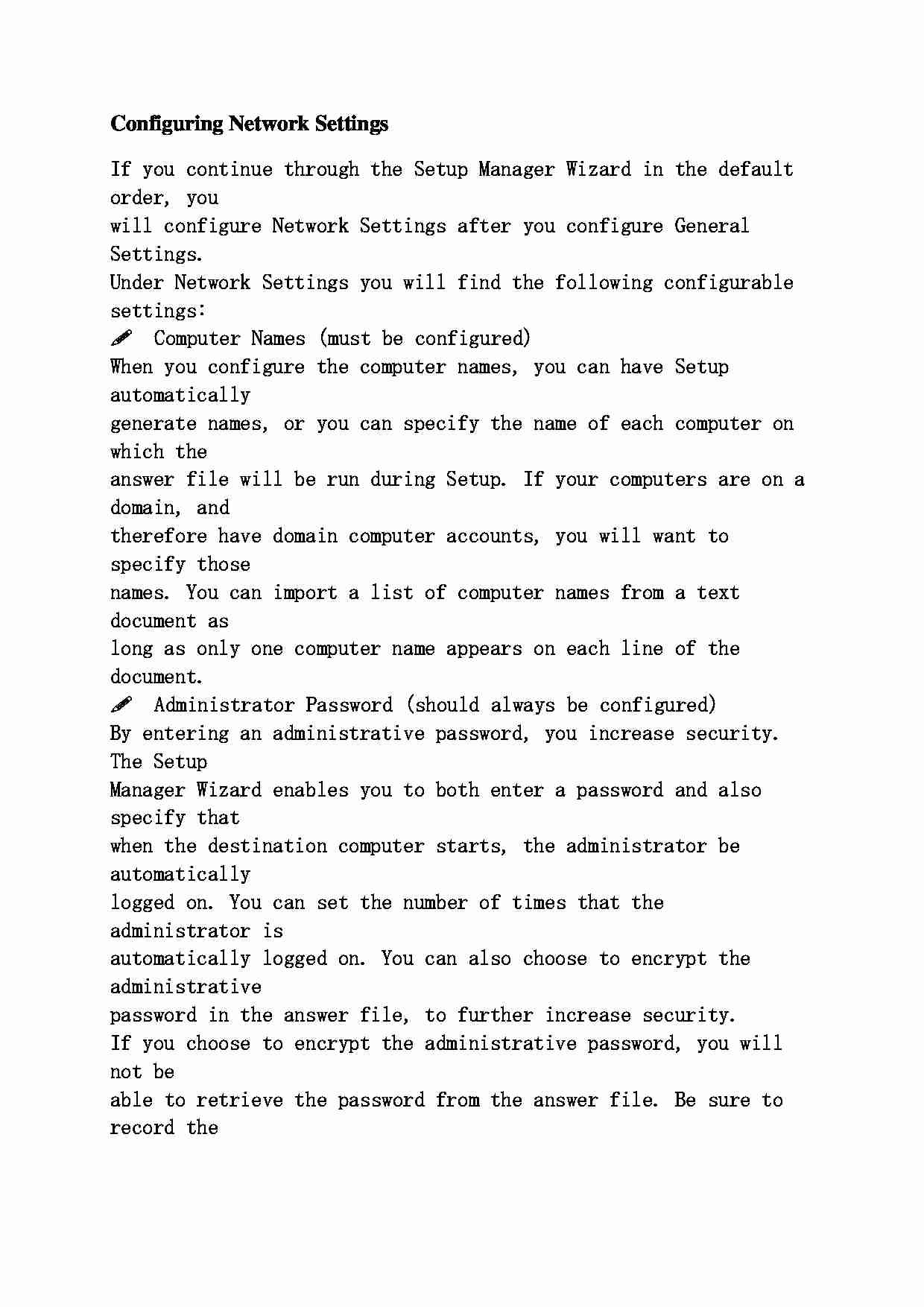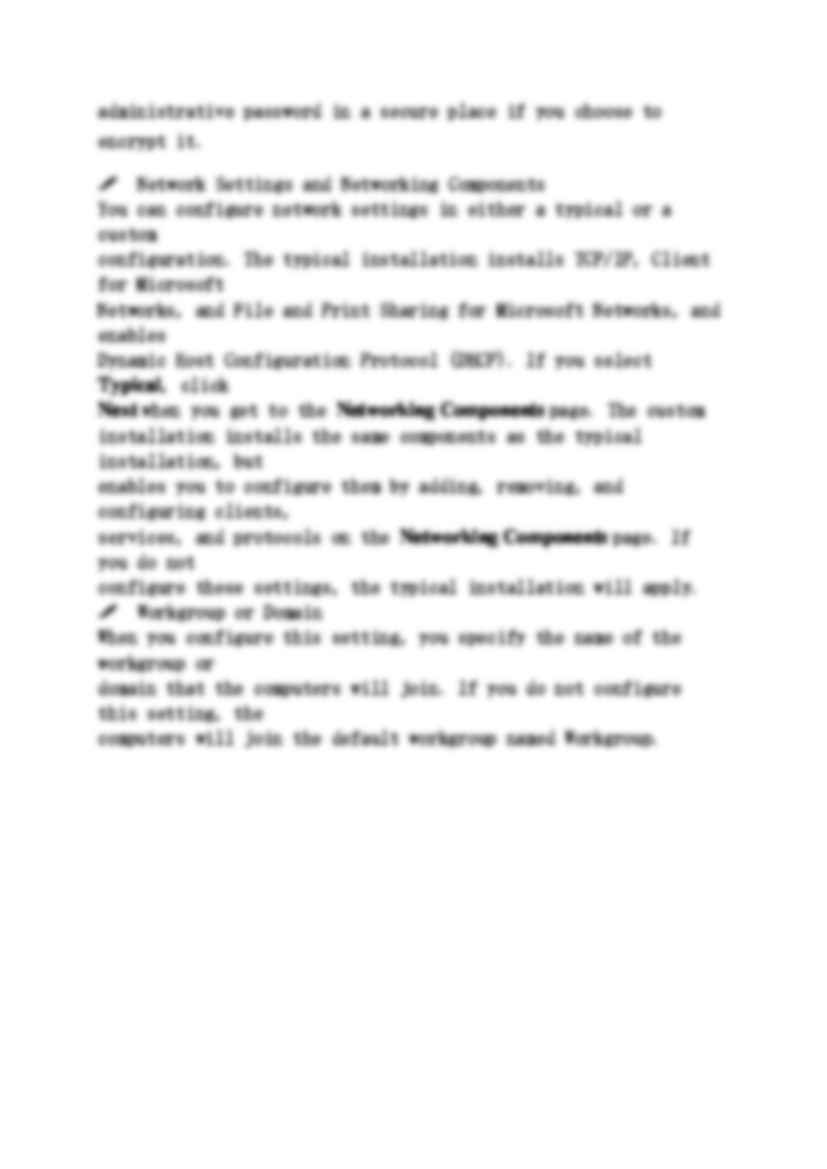To tylko jedna z 2 stron tej notatki. Zaloguj się aby zobaczyć ten dokument.
Zobacz
całą notatkę


Configuring Network Settings If you continue through the Setup Manager Wizard in the default order, you
will configure Network Settings after you configure General Settings.
Under Network Settings you will find the following configurable settings:
Computer Names (must be configured)
When you configure the computer names, you can have Setup automatically
generate names, or you can specify the name of each computer on which the
answer file will be run during Setup. If your computers are on a domain, and
therefore have domain computer accounts, you will want to specify those
names. You can import a list of computer names from a text document as
long as only one computer name appears on each line of the document.
Administrator Password (should always be configured)
By entering an administrative password, you increase security. The Setup
Manager Wizard enables you to both enter a password and also specify that
when the destination computer starts, the administrator be automatically
logged on. You can set the number of times that the administrator is
automatically logged on. You can also choose to encrypt the administrative
password in the answer file, to further increase security.
If you choose to encrypt the administrative password, you will not be
able to retrieve the password from the answer file. Be sure to record the
administrative password in a secure place if you choose to encrypt it.
Network Settings and Networking Components
You can configure network settings in either a typical or a custom
configuration. The typical installation installs TCP/IP, Client for Microsoft
Networks, and File and Print Sharing for Microsoft Networks, and enables
Dynamic Host Configuration Protocol (DHCP). If you select Typical , click Next when you get to the Networking Components page. The custom
installation installs the same components as the typical installation, but
enables you to configure them by adding, removing, and configuring clients,
services, and protocols on the Networking Components page. If you do not
configure these settings, the typical installation will apply.
Workgroup or Domain
When you configure this setting, you specify the name of the workgroup or
domain that the computers will join. If you do not configure this setting, the
computers will join the default workgroup named Workgroup.
... zobacz całą notatkę




Komentarze użytkowników (0)